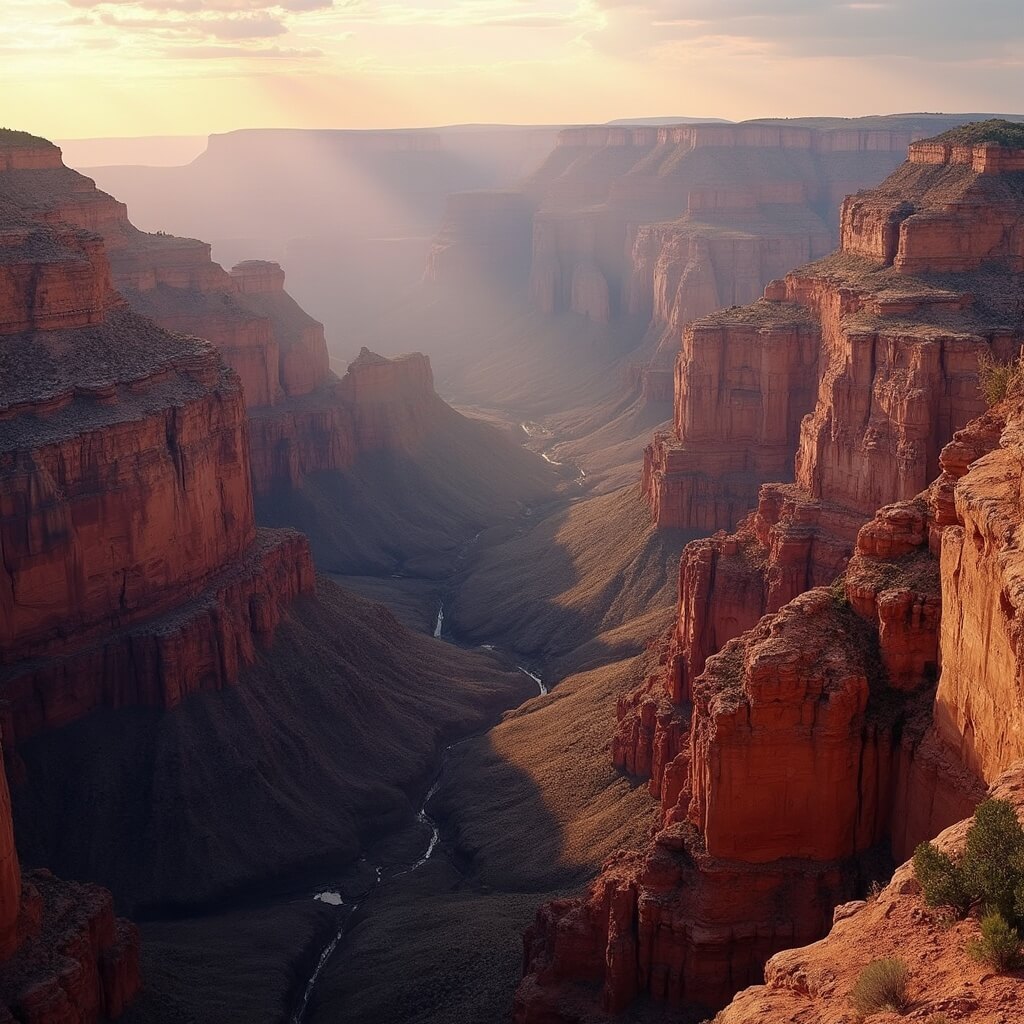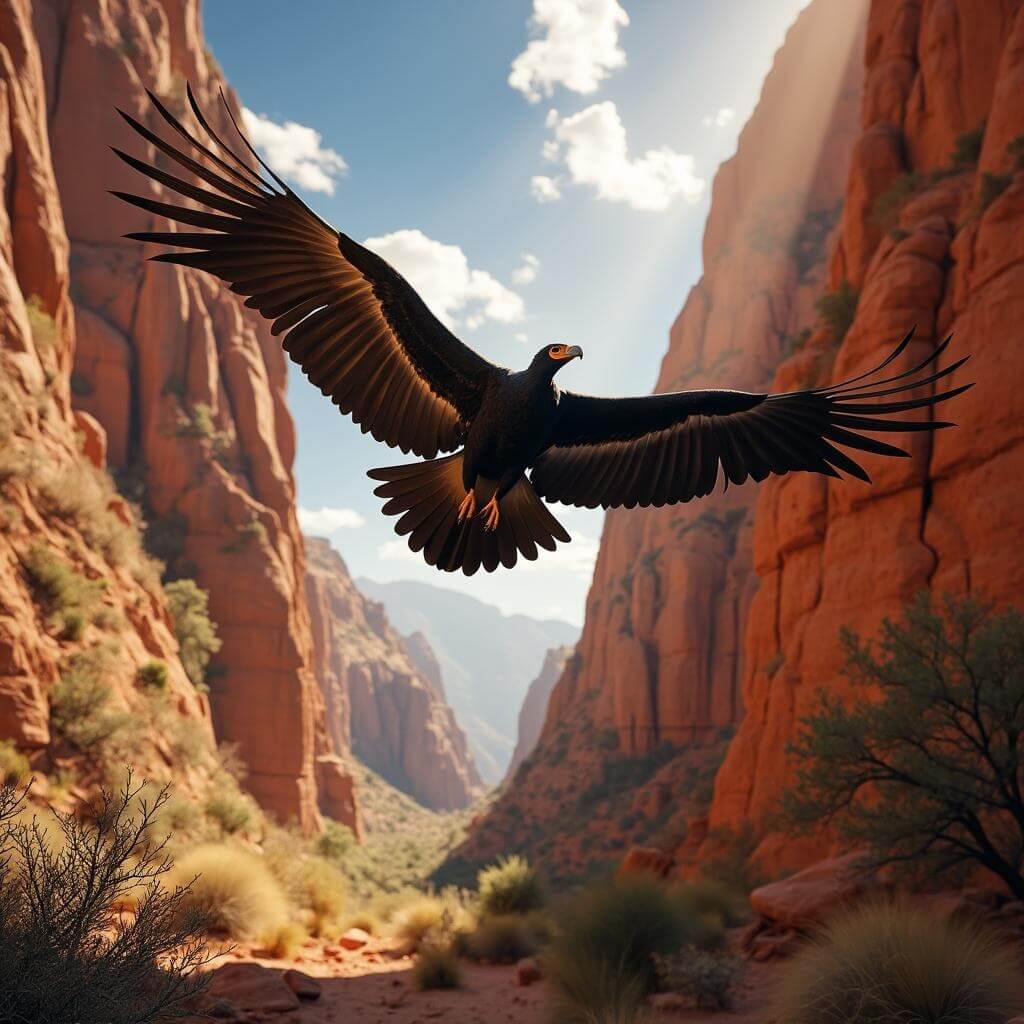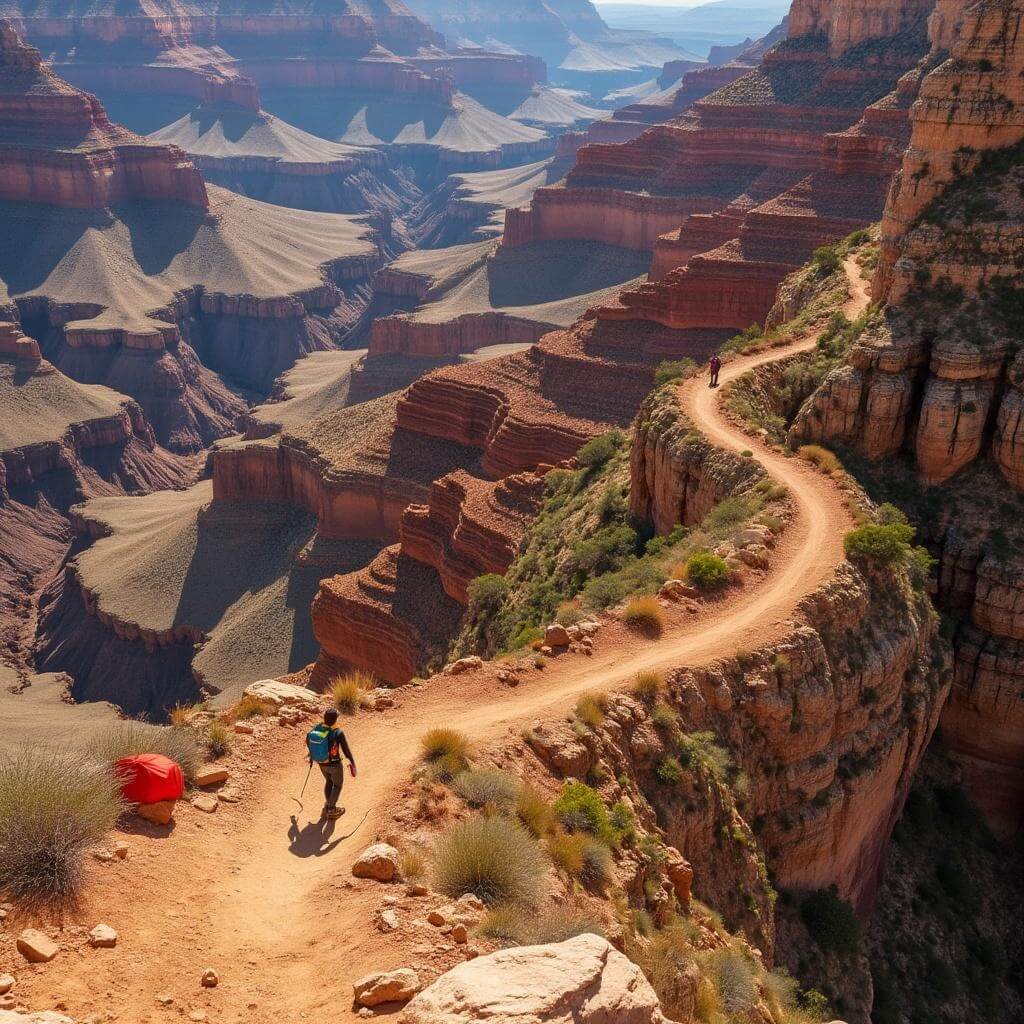Ever wondered what it takes to truly experience one of the world’s most breathtaking natural wonders?
The Grand Canyon isn’t just a landscape—it’s a geological masterpiece that tells a 2-billion-year story of Earth’s incredible history. Over 5 million people visit annually, but here’s a mind-blowing fact: less than 1% actually venture below the rim.

Why the Grand Canyon Demands Your Respect
Hiking here isn’t a casual stroll. It’s an adventure that demands physical prowess, mental preparation, and deep respect for an environment that can turn challenging in seconds.
I remember my first Grand Canyon hike like it was yesterday. Descending the Bright Angel Trail, the temperature shifted dramatically. What started as a cool morning at the rim quickly became a scorching inner canyon experience. The exposed rock walls radiated heat, and every step required calculated precision.

Hiking Types: From Casual to Crazy
The Grand Canyon offers something for every adventurer:
- Day Hiking: Perfect for beginners
- South and North Rim trails with spectacular views
- No permits required for non-commercial day hikes
- Some trails are even paved and accessible
- Overnight Backcountry Expeditions: For the serious explorer
- Classic trails like Bright Angel and South Kaibab
- Mandatory permits for overnight stays
- Requires extensive preparation
- Rim-to-Rim Challenge: The ultimate test
- 24-mile trek with massive elevation changes
- 6,000 ft descent and 4,500 ft ascent
- Best attempted May–October
- Only for experienced, well-prepared hikers
Trail Spotlight: Not All Paths Are Created Equal
South Kaibab Trail
- Exposed ridge with stunning panoramic views
- No water sources
- Endpoints range from quick scenic stops to extreme river routes
Bright Angel Trail
- Most popular rim-to-river route
- Regular water stations
- Shaded sections and support facilities
North Kaibab Trail
- More remote and challenging
- Connects with other corridor trails at Phantom Ranch
Preparation: Your Survival Toolkit
Hiking the Grand Canyon isn’t a spontaneous decision. You’ll need:
- Extensive physical training
- Proper gear
- Water management strategy
- Emergency preparedness
Critical Gear Checklist:
- Ample water
- Sun protection
- Nutrition
- Weather-appropriate clothing
- First aid kit
- Map and navigation tools
Safety: The Canyon Doesn’t Compromise
Potential hazards include:
- Extreme heat
- Sudden weather changes
- Dehydration
- Challenging terrain
Pro tip: Follow the “Twice as Hard” rule. The downhill journey feels easy, but the return trip will test every ounce of your endurance.
The rescue statistics are sobering—over 250 hikers need assistance annually. This isn’t a playground; it’s a serious environment that demands respect.
My personal experience taught me that preparation isn’t optional—it’s survival.
The Grand Canyon offers an unparalleled adventure, bridging geological wonder with personal challenge. Whether you’re a casual hiker or an extreme adventurer, this landscape has a path waiting for you.
Your first step into this ancient, layered landscape will reveal why less than 1% of visitors truly understand the canyon’s raw, transformative power.
The descent begins, and with it, a journey that will redefine your understanding of natural beauty and personal limits.
Explore More Adventures in the Southwest
If you’re captivated by the American Southwest, don’t miss our feature on stargazing in Utah’s National Parks or take a nostalgic drive along Route 66 for a taste of classic Americana.
The Psychology of Canyon Conquest: Mental Preparation Matters
Why do some hikers thrive while others struggle in the Grand Canyon?
Mental preparation is your most critical piece of equipment. Physical training matters, but psychological resilience determines true success.
During my most challenging canyon expedition, I discovered that mental fortitude trumps physical strength every single time. When my legs felt like lead and the sun transformed the trail into a personal inferno, my mindset became my most powerful survival tool.
Psychological Survival Strategies
- Break the journey into manageable segments
- Celebrate micro-achievements
- Maintain a positive internal dialogue
- Accept discomfort as part of the adventure
Wildlife Encounters: Unexpected Canyon Companions
The Grand Canyon isn’t just rocks and trails—it’s a living ecosystem teeming with remarkable wildlife.
Potential animal encounters include:
- Mule deer
- California condors
- Bighorn sheep
- Rattlesnakes
- Mountain lions (rare but present)
Pro Survival Tip: Observe wildlife from a distance. You’re a visitor in their home, not the other way around.
Environmental Responsibility: The Leave No Trace Mandate
Every hiker becomes a temporary steward of this ancient landscape.
Responsible hiking principles:
- Pack out ALL trash
- Stay on designated trails
- Minimize campfire impacts
- Respect wildlife habitats
- Preserve archaeological sites
Remember: Your footprint should be invisible, your memories permanent.
Technology and Modern Hiking: Tools That Transform Experiences
Modern technology has revolutionized canyon exploration:
- GPS Navigation Systems
- Solar-powered charging units
- Lightweight satellite communication devices
- Advanced moisture-wicking gear
- Real-time weather tracking apps
These tools don’t replace preparation—they enhance it.
Cost Considerations: What You’ll Invest
Grand Canyon hiking isn’t a budget adventure:
Estimated Costs:
- Permits: $10–$50
- Gear: $500–$2,000
- Transportation: $200–$500
- Emergency Supplies: $100–$300
- Potential Guide Services: $200–$1,500
When to Say No: Understanding Your Limits
Not every hiker belongs on every trail.
Red Flags Indicating You’re Not Ready:
- Insufficient cardiovascular fitness
- Chronic health conditions
- Limited hiking experience
- Inability to carry required gear
- Lack of mental resilience
The Ultimate Recommendation
Start small. Graduate slowly. Respect the canyon’s complexity.
Your first Grand Canyon hike isn’t about conquering—it’s about connecting. With preparation, respect, and an open mind, you’ll transform a simple hike into a life-defining journey.
As the ancient rock layers whisper their billion-year stories, you’ll realize: The Grand Canyon hiking experience is less about the destination and more about the profound transformation along the way.
Your adventure begins with a single, well-prepared step into one of Earth’s most magnificent landscapes.
For more in-depth insights and planning tools, explore the Complete Guide to Rim-to-Rim Hiking at the Grand Canyon and the Official Grand Canyon Day Hiking Guide & Trail Information.
Looking for more adventure inspiration?
- Explore the Caves of Carlsbad Caverns
- Walk the Freedom Trail in Boston
- Catch the Northern Lights in Fairbanks, Alaska
- Take a Self-Discovery Trip to Taos, New Mexico
- Explore the Art Scene in Santa Fe










